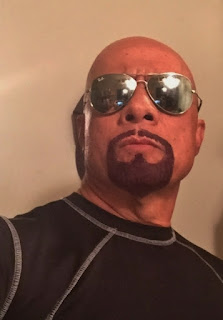“E Au le Ina’ilau a Tama’ita’i” (The women’s roles are just as, if not more, consequential...)
The expression aptly describes Moana’s accomplishment and victory.
The expression is derived from a Samoan legend that tells of a competition between an “aumaga” (untitled men) and “aualuma” (unmarried women) to thatch Sina’s house. A “battle of the sexes” if you will. On the morning of the competition, the women woke up early and started thatching their assigned rows while the men were still sleeping apparently tired from the prior poula (night of fun and revelry). When the men finally woke up, they found that the women had completed their task and part of the competition, and therefore had won. The moral is the consequentiality of the role of women. To me, this can be one of the messages/themes of Moana.
Moana, the movie, is all about women. Sorry men, you lose. Again. Well, hey (or is that “heihei”), the protagonist is Moana, for cackling out loud. And if she’s not enough, the next two key consequential characters in the movie are also ...hmmm...women? Te Fiti and Tala. Peck that, man! Okay, chicken humor aside.
Moana, the woman, is the real “wayfinder” and a true trailblazer, breaking traditional barriers and stereotypes. At the end of the movie, the lone conch shell on the top of a tiered pile of rocks on the mountain sums it all up, symbolically at least. The rocks represent in rank and chronological order the past heroes and chiefs, who were apparently all men, who have made worthy contributions to Motunui and its people. Some of them were mariners and famous seafarers who helped traverse and navigate the ocean using the stars to help find their way to new islands and new homes for their families. But the conch shell, which represents Moana, is an aberration. It represents the first woman worthy and qualified to be on the mountain with the male heroes of the island. Moana earned her place by accomplishing a near impossible task of returning Te Fiti’s heart, and in turn restoring life to her parched moribund Motunui.
Moana represents a modern woman - Polynesian woman. She has love for her people, which is the driving force and motivation to complete her mission of restoring Te Fiti’s heart. During her quest, “Moana of Motunui” - not just Moana - becomes her motto and mantra, a reminder that she is not only part of something bigger, but she also has an obligation to her island and people. And to accomplish this, including saving the island, she has to venture “beyond the reef”. She has to give up her comfort zone in the seeming self sufficient, happy, carefree life on the paradisal Motunui.
In today's real life, Moana represents those “wayfinding” Polynesian women in Washington, in local governments on their respective island nations, lawyers, CEO’s, authors, poets, etc. Moana is also like Vaimasenu’u Zita Martel, who, in her own right, is a pioneer woman mariner of Samoa’s longboats. Moreover, Moana is, and can be, the voice of her island people against the overfishing of their waters, threats of rising sea levels and other effects of climate change. And of course her war cry is: “The ocean is [our] friend”. Island leaders should tap into and seize Moana’s moment and start boosting the campaign using the above as the slogan. They need to start delivering the proverbial “heart” to those responsible for the “evil” of rising ocean levels, and reminding them that for most of our Polynesian people, the ocean is still their friend and a major source of their livelihood. The very threat to their existence of the rising ocean levels can be eerily real.
Moana, as an individual, is a strong woman, though not necessarily in the physical sense. She has more of the inner strength - courage, determination, drive, resolve, stamina (yes, Trump), etc. She is independent and mostly, in her own admission, “self taught”. Though hailed as being chosen and preordained, nothing is automatic and/or guaranteed. Moana still has to fight her battles and challenges to fulfill her calling. It’s true that she does get some help along the way, from her “friend” (ocean) and from others (Maui, Tala and Heihei), but the bulk of the opposition and adversity was overcome single-handedly by Moana herself. The help of course is to keep her character grounded as a mere mortal versus the “godly attributes” of Maui. But unlike Maui, whose main source of strength and power is from without (his fish hook), Moana’s strength, again, is from within. The main and critical stage of defeating the evil and fiery powers of Te Ka is the crossing of the channel. And while Maui is conspicuously absent during that pivotal and decisive time, Moana is fighting it alone, mostly employing her own strength, skills and courage and with some centrifugal help of her “friend”.
And so although there have been prominent Polynesian women in the past - “shells among the rocks” - like Nafanua and Salamasina (Samoa), Queen Salote (Tonga) Liliuokalani (Hawaii) to name a few, Moana represents the modern Polynesian woman. She is a matai (chief), a politician, a lawyer, a doctor, judge, author, a professional athlete, and perhaps most importantly, according to the movie, a daughter of a chief. OR, according to my LDS lingo, a “daughter of God, The Chief !”
Finally, it may be true that Moana is just a cartoon, as some people raucously and shallowly (pun intended) claim, but Moana also represents an Ideal. And one cannot fully understand that, until he/she goes “beyond the reef”, to the moana (deep ocean). In other words “beyond the cartoon level”. The equivalent Samoan expression is to “lafo le upega i le loloto o le moana” (“cast the net into the deep ocean”) where there are bigger and better fishes. Simply, go deeper to the “moana” in order to understand and appreciate Moana.
Next Up ... Maui, the wannabe god.

















































